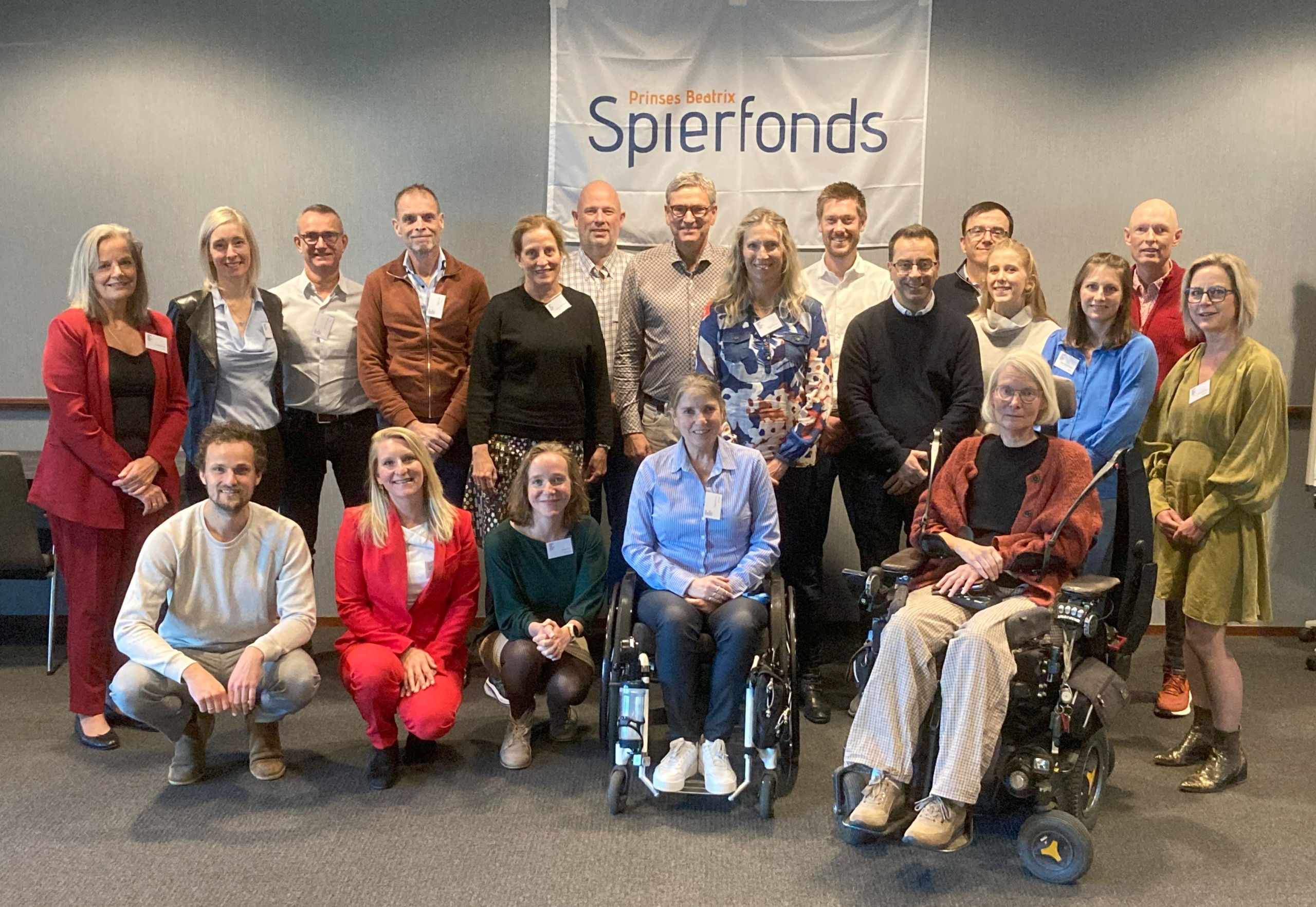2nd ENMC workshop on exercise training in muscle diseases; towards consensus-based recommendations on exercise prescription and outcome measures.
- Number 281
- Date 4 October 2024
281st ENMC International Workshop:
Location: Hoofddorp, The Netherlands
Title: 2nd ENMC workshop on exercise training in muscle diseases; towards consensus-based recommendations on exercise prescription and outcome measures.
Date: 4-6 October 2024
Organisers: Dr E. Voorn (The Netherlands), Prof. J. Vissing (Denmark), Prof. A. Lucia (Spain).
Translations of this report by:
Danish by NS Poulsen
Swedish by H Alexanderson
Spanish by A Bustos
French by JY Hogrel
Norwegian by K Ørstavik
Dutch by C van Esch & I de Groot & M Kroneman
Participants:
A Bustos (Spain), A Lucia (Spain), A Santalla (Spain), C van Esch (The Netherlands), É Duchesne (Canada), E Voorn (The Netherlands), H Alexanderson (Sweden), H Knoop (The Netherlands), I de Groot (The Netherlands), J Vissing (Denmark), JY Hogrel (France), K Ørstavik (Norway), L van den Berg (The Netherlands), M James (United Kingdom), M Kroneman (The Netherlands), NS Poulsen (Denmark), N Voet (The Netherlands), P Pijnappel (The Netherlands), S Oorschot (The Netherlands), T Krag (Denmark), and T Taivassalo (United States of America)
Summary of the workshop:
The 281st ENMC international workshop was held from the 4th-6th of October 2024 in Hoofddorp, the Netherlands. Twenty-one participants, including clinicians, research experts and patient advocates, from 9 different countries engaged in the workshop.
Background and aim:
Exercise for people with muscle disease has been investigated increasingly since the last ENMC workshop on exercise in 2008. The beneficial effects and safety of exercise have been established, and exercise is now considered safe and beneficial in the vast majority of muscle diseases. However, patients and health care professionals need guidance on prescribing the frequency, intensity, type, and time of exercise, as well as outcome measures to monitor progress and to evaluate the effects of exercise programs. The aim of this workshop was to develop recommendations on exercise prescription and outcome measures.
Workshop outcomes:
Exercise was defined as repetitive, purposeful, planned, and structured physical activity. To narrow down the topic, the workshop covered aerobic and resistance exercises in muscle diseases. Prior to the workshop, the organisers prepared the outline for a position stand on aerobic and resistance exercise based on the scientific literature. These recommendations formed the centre of discussions in the following areas: 1) exercise prescription, 2) outcomes, and 3) exercise continuation.
In the opening session, the patient representatives presented results of a survey among 2074 patients. The survey showed that, although most respondents reported to exercise and said that exercise was good for their health, the frequency, intensity, type, and time of their exercise programs varied widely, and almost 30% of the respondents said they needed more guidance. In line with this, the young researchers presented the results of a survey among 57 healthcare professionals, which showed that while almost all prescribed exercise, around 25 % of the respondents did not prescribe resistance exercise. Safety concerns (including concerns about heart conditions) were among the main barriers to prescribing exercise. Furthermore, around 80 % of the healthcare professionals needed more support in prescribing exercise, preferably in the form of a guideline.
In the session on outcomes, there was consensus to use exercise testing before an exercise program to better individualise exercise prescription. Outcomes to monitor progress (including safety) and to evaluate the effects of exercise programs were discussed and will be reported in the full report.
In the last session it was discussed how to keep patients exercising by finding individual motivators for exercise, setting goals, and systematically assessing facilitators and barriers prior to an exercise intervention. This can be facilitated using eHealth technology.
Impact on the patients and their families:
There was consensus that tailored exercise is essentially safe and beneficial for people with muscle disease and should be recommended, including for patients with very weak muscles and those in a wheelchair. We aim to publish the survey results (including a lay version) and position stand (including an information leaflet for patients) in separate scientific articles. Our recommendations can help patients and health care professionals with planning exercise to improve the health of people with muscle disease.
Next steps:
- The long-term (i.e., > 1 year) effects and safety of exercise in muscle diseases is still uninvestigated.
- There is some evidence that even patients with very weak muscles can benefit from exercise, but there are not enough studies.
- Finding ways to help people with continuation of exercise and an active lifestyle, for example by using eHealth technology.
- Investigating different forms of exercise programs (for example low and/or high intensities, or combinations thereof) or types of exercise (for example aerobic and resistance exercise combined) can potentially improve exercise effects.
A full report will be published in Neuromuscular Disorders (PDF)

